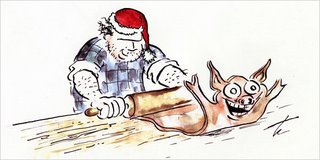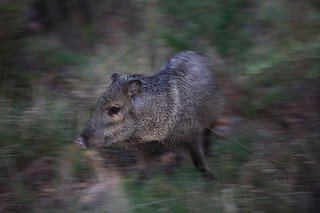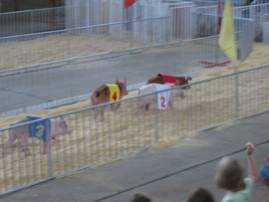Hog-Killing Time

I was watching Searching for the Wrong-Eyed Jesus last night, which featured my favorite southern writer, Harry Crews. In the extra stuff on the DVD he tells part of the story of how he nearly died as a child after being flung into the water used to scald a hog in a game of pop-the-whip. You can find the full story in his marvelous autobiography A Childhood: The Biography of a Place (1978). Anyhows, Crews' story got me thinking that we are more or less at the time for traditional hog slaughter in the South, although it has been a bit too warm here in Tyrone, Georgia for the past few days. There are long accounts of the traditional method of slaughtering and preparing a hog in a number of places, including the first Foxfire book (which came out of Rabun County, Georgia, natch). For now, though, here are some ways a few Southern writers have described this community ritual.
In his semi-autobiographical novel Run With the Horsemen (1982) Ferrol Sams (from right here in Fayette County) recalled that
One of the farm events that made school attendance almost unthinkable to the boy was hog-killing. This involved so much planning, organization, expertise, and total group participation that the boy likened it to feudal preparations for siege. The frantic activity and excitement were exhilarating, and the boy was attracted to it primarily because so much of the ritual horrified and repelled him.In A Childhood, Crews observed how
Farm families swapped labor at hog-killing time just as they swapped labor to put in tobacco or pick cotton. Early one morning our tenant farmers, mama, my brother, and I walked the half mile to Uncle Alton's place to help put a year's worth of meat in the smokehouse. Later his family would come and help us do the same thing. Before it was over, everything on the hog would have been used.Finally, in Southern Food: At Home, On the Road, and in History (1987), John Edgerton provides some of the details
On most southern farms the first cold snap harkened the end of summer vegetables and the annual hog slaughter. Livers, cracklings and chitterlings (small intestines), were eaten immediately. Globs of hog fat were boiled in a gigantic black pot to be rendered into lard. Scraps of meat were ground up into sausages. Ribs were slowly steamed (as in the method recommended by Confederate general Stonewall Jackson, who oversaw the pork preparation for his men in gray). Sides of bacon, hog jowls, shoulders, and hams were cured in salt for weeks. Then they were hung in the smokehouse along with a variety of sausages, ham hocks, and knuckles to be smoked over hickory or pecan wood, peanut shells, or corncobs (known as meat cobs). Some farmers cured their meat with red pepper to prevent infestations of fly larvae in the era before refrigeration.The contrast between traditional foodways (ones rapidly being lost, I presume, not that that's necessarily a bad thing) and modern pork production needs no further elucidation, I suppose...















